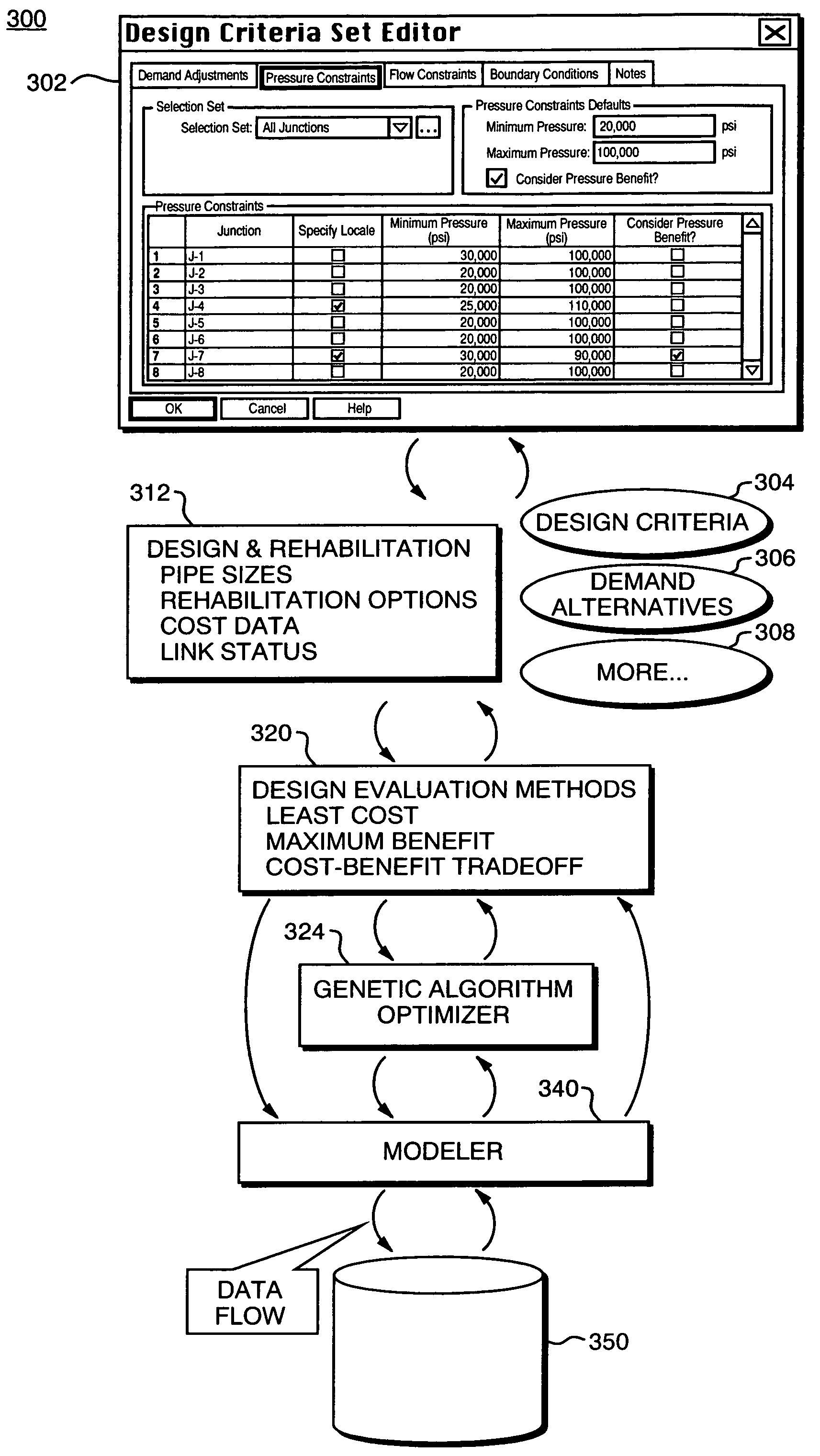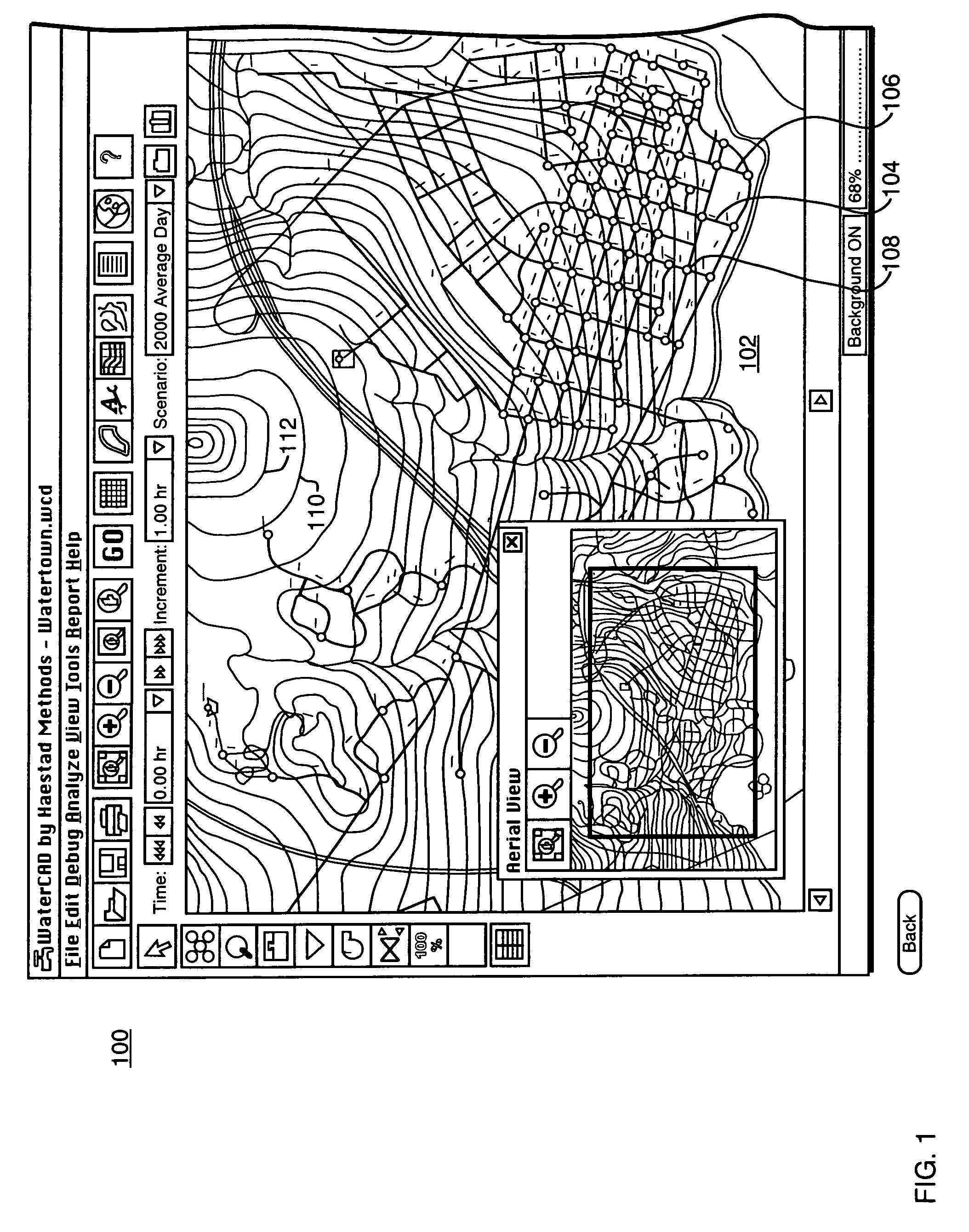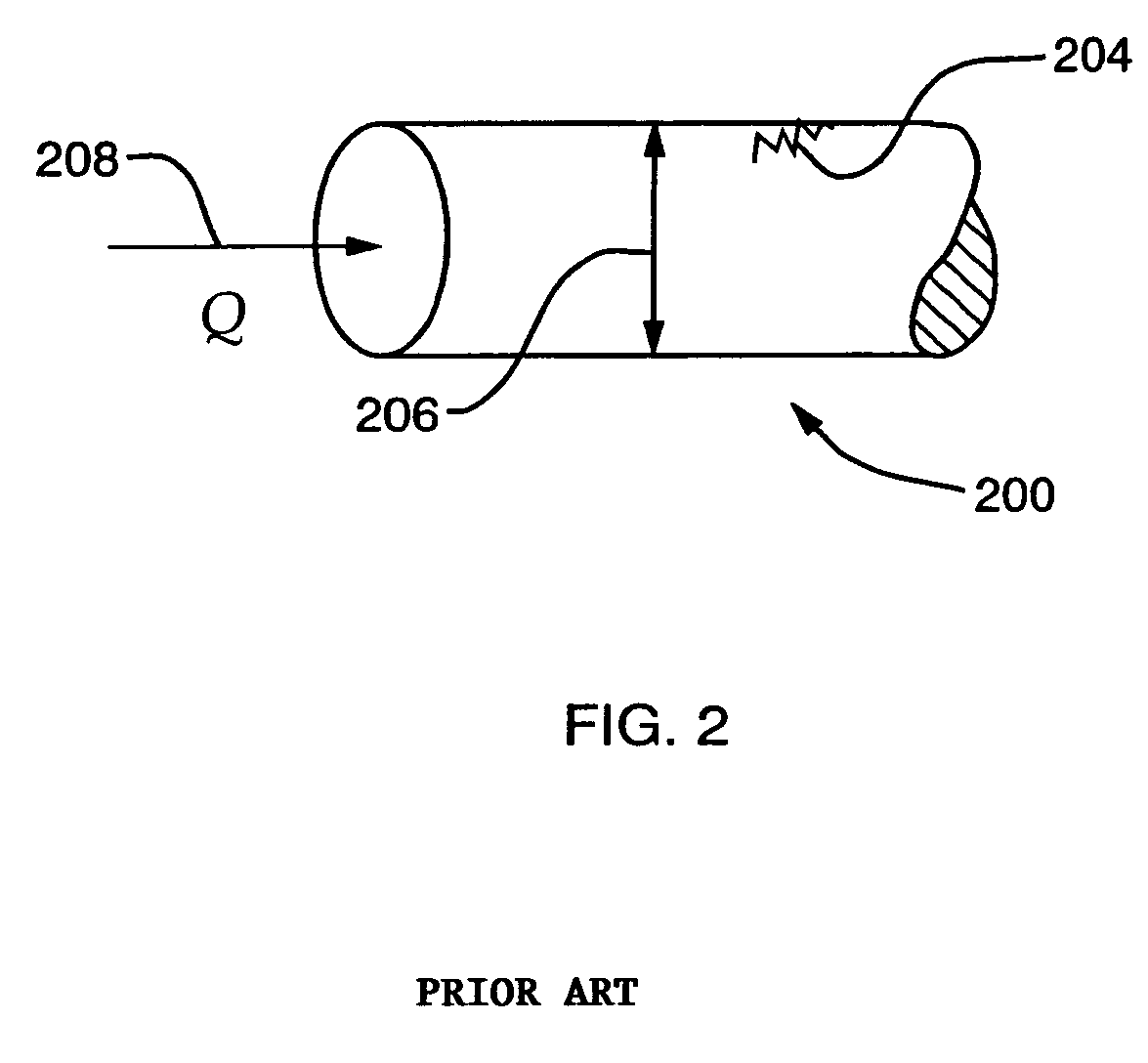Method for optimizing design and rehabilitation of water distribution systems
a technology for water distribution systems and optimizing design, applied in the field of water distribution networks, can solve the problems of not necessarily being able to achieve multi-objective design, prior techniques have not given the user the capability of trade-offs or multi-objective design, and the lowest cost does not necessarily yield the optimal return on investment of the water utility company. , to achieve the effect of optimizing design and rehabilitation, maximum cost efficiency and benefit, and cost saving
- Summary
- Abstract
- Description
- Claims
- Application Information
AI Technical Summary
Benefits of technology
Problems solved by technology
Method used
Image
Examples
Embodiment Construction
[0029]By way of background and for purposes of a more detailed illustration, FIG. 1 depicts a graphic user interface (GUI) 100 of a water distribution network as displayed by a software tool for modeling water distribution networks. The network 102 contains pipes, such as the pipes 104 and 106 that are connected at junctions, such as the junction 108. These pipes form a water distribution network to provide water to a portion of a community. The isometric lines 110 and 112, for example, illustrate the topology of the under-lying land mass upon which the water distribution network is overlaid.
[0030]For purposes of illustration, we have described the invention with respect to a water distribution network, however, it is equally applicable and readily adaptable for use with networks such as storm drainage, sewage networks and other hydraulic applications, and these are well within the scope of the present invention.
[0031]When a modeler or engineer decides to design a new portion of a w...
PUM
 Login to View More
Login to View More Abstract
Description
Claims
Application Information
 Login to View More
Login to View More - R&D
- Intellectual Property
- Life Sciences
- Materials
- Tech Scout
- Unparalleled Data Quality
- Higher Quality Content
- 60% Fewer Hallucinations
Browse by: Latest US Patents, China's latest patents, Technical Efficacy Thesaurus, Application Domain, Technology Topic, Popular Technical Reports.
© 2025 PatSnap. All rights reserved.Legal|Privacy policy|Modern Slavery Act Transparency Statement|Sitemap|About US| Contact US: help@patsnap.com



